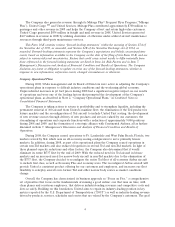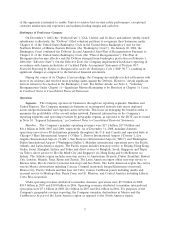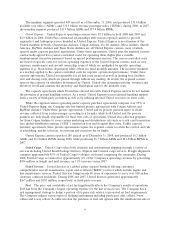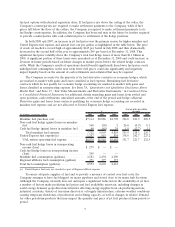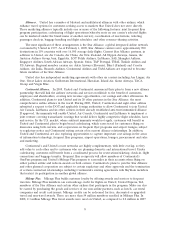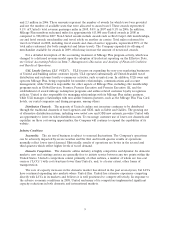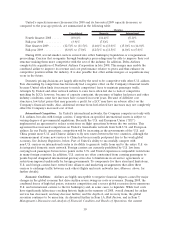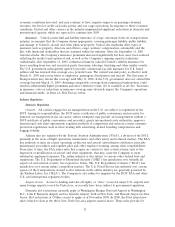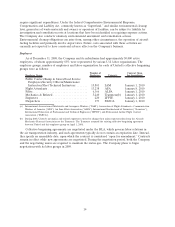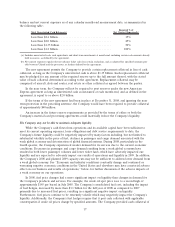United Airlines 2008 Annual Report Download - page 14
Download and view the complete annual report
Please find page 14 of the 2008 United Airlines annual report below. You can navigate through the pages in the report by either clicking on the pages listed below, or by using the keyword search tool below to find specific information within the annual report.
require significant expenditures. Under the federal Comprehensive Environmental Response,
Compensation and Liability Act, commonly known as “Superfund,” and similar environmental cleanup
laws, generators of waste materials and owners or operators of facilities, can be subject to liability for
investigation and remediation costs at locations that have been identified as requiring response actions.
The Company also conducts voluntary environmental assessment and remediation actions.
Environmental cleanup obligations can arise from, among other circumstances, the operation of aircraft
fueling facilities and primarily involve airport sites. Future costs associated with these activities are
currently not expected to have a material adverse affect on the Company’s business.
Employees
As of December 31, 2008, the Company and its subsidiaries had approximately 50,000 active
employees, of whom approximately 83% were represented by various U.S. labor organizations. The
employee groups, number of employees and labor organization for each of United’s collective bargaining
groups were as follows:
Employee Group
Number of
Employees Union(a)
Contract Open
for Amendment
Public Contact/Ramp & Stores/Food Service
Employees/Security Officers/Maintenance
Instructors/Fleet Technical Instructors ....... 15,801 IAM January 1, 2010
Flight Attendants ......................... 13,238 AFA January 8, 2010
Pilots................................... 6,366 ALPA January 1, 2010
Mechanics & Related ...................... 5,240 Teamsters(b) January 1, 2010
Engineers ............................... 220 IFPTE January 1, 2010
Dispatchers .............................. 173 PAFCA January 1, 2010
(a) International Association of Machinists and Aerospace Workers (“IAM”), Association of Flight Attendants—Communication
Workers of America (“AFA”), Air Line Pilots Association (“ALPA”), International Brotherhood of Teamsters (“Teamsters”),
International Federation of Professional and Technical Engineers (“IFPTE”) and Professional Airline Flight Control
Association (“PAFCA”).
(b) During 2008, United’s mechanics and related employees elected to change their union representation from the Aircraft
Mechanics Fraternal Association to the Teamsters. The Teamsters assumed the existing collective bargaining agreement
between United and this employee group on April 1, 2008.
Collective bargaining agreements are negotiated under the RLA, which governs labor relations in
the air transportation industry, and such agreements typically do not contain an expiration date. Instead,
they specify an amendable date, upon which the contract is considered “open for amendment.” Contracts
remain in effect while new agreements are negotiated. During the negotiation period, both the Company
and the negotiating union are required to maintain the status quo. The Company plans to begin
negotiations with its labor groups in 2009.
14


